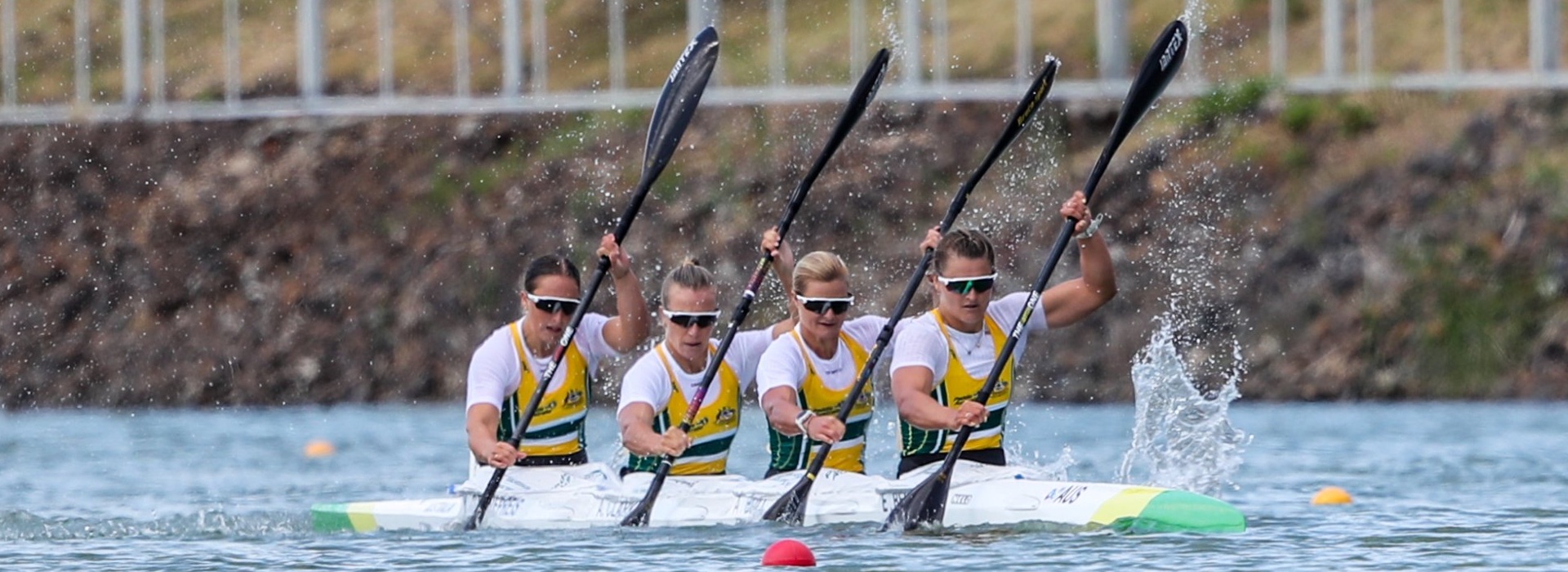
Canoe Sprint
Canoe Sprint Events
What is Canoe Sprint?
Canoe sprint takes place on a flat water course and races are contested by two types of boat, canoe (C) and kayak (K). In a canoe, the paddler competes in a striding position using a single-blade paddle, in contrast to the double-bladed paddle used in a sitting position in a kayak. At international level the discipline is competed at four distances from 200m to 5000m, both individually and in teams of up to four. Each discipline is categorised by boat type, number of competitors per boat, gender, and race distance, meaning the example of C2M 500m is the canoe male doubles 500m.
Competitive canoe sprint racing dates back to 1869 in Great Britain, but it was more than 50 years until the first international body for canoe sport was formed in Copenhagen, Denmark, in 1924. Canoe sprint made its debut at the Olympic Games in Berlin in 1936 with nine men’s events, with that number reduced to eight in London 12 years later to accommodate the first women’s race at the Games, the K1W 500m won by Denmark’s Karen Hoff. Canoe sprint has featured in every Games since, and the 2016 programme in Rio de Janeiro will consist of eight men’s and four women’s events.
The dominant force in canoe sprint is Hungary, winners of 194 world titles in the discipline, nearly twice as many as next-highest Germany (109). Katalin Kovács has claimed 31 of Hungary’s 194 world titles in canoe sprint, a record for an individual. Her triumphs at the world championships spanned from 1998 to 2011, across eight different kayak disciplines. This included the K4W 500m, and a notable victory in 1999 when she was a part of the team that beat a German boat including Birgit Fischer, winner of 11 world titles in K4W 500m, a record for an individual in a specific canoe sprint event.
Hungary (77) has also claimed the most medals in canoe sprint at the Olympic Games, but neither the leading male nor female gold medal winners in the discipline at the Games is Hungarian. Fischer (8) holds the overall record while Gert Fredriksson (6) of Sweden has won the most gold medals by a male. His tally claimed from 1948 to 1960 makes him his country’s greatest Olympian in any sport (summer or winter) by gold medals won.
The traditional dominance of Hungary and Germany was interrupted at the 2015 World Championships in Milan, Italy, as Belarus became the first country this century, excluding those two, to finish with the outright most gold medals at a single world championships. Maryna Litvinchuk was the only person to win three gold medals at that event. A female representing Belarus has only won an Olympic gold medal (summer only) in athletics and rowing.
Things you need to know:
- Canoe sprint is a race to the line on a flat water course with international competition set over four distances: 200, 500, 1000 and 5000 meters.
- Races are contested as individuals and teams with up to four athletes in a boat.
- Both canoes and kayaks compete in the sprint discipline and are distinguished on the results sheet by their initial letter C and K followed by the number of competitors in the boat, the gender and then the distance. For example, K1M 200m is kayak men’s singles over 200 meters.
- In a kayak, the paddler is seated and uses a double-bladed paddle pulling the blade through the water on alternate sides to propel the boat forward.
- In a canoe, the paddle has a single-blade and the athlete uses a striding position with one knee on the deck and the other foot forward allowing room to pull the paddle down their preferred side of the canoe.
- In international competition races are split into nine lanes that are allocated randomly in the initial heats; subsequently lane positions are set by qualification time: five being the fastest to qualify, then six, four, three, two, seven, eight, one and nine.
- The Olympic Games is an exception, with races comprising of eight athletes with the fastest two occupying lanes four and five after the initial preliminary shakeout.
